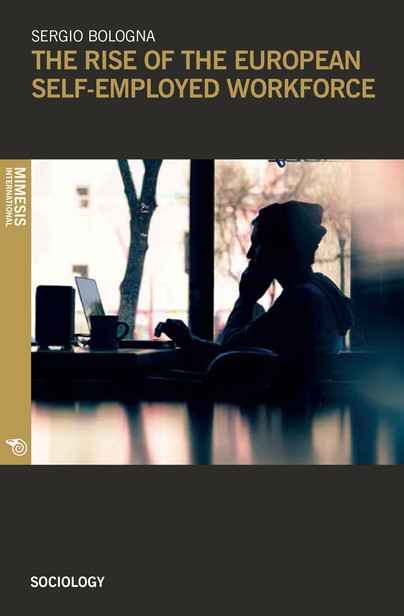
Format: Paperback
Pages: 262
ISBN: 9788869770647
Pub Date: 26 Mar 2018
Series: Sociology
Description:
Sergio Bologna has long been one of the sharpest analysts and critics of the changing structures in the contemporary labour market. In this new volume, the Italian thinker focuses on the phenomenon of ‘freelance workers’, and particularly of knowledge workers, not just as another segment within the global workforce, but as an emerging category striving to construct its own identity. Far from limiting his analysis to the realm of the economy, Bologna investigates the difference between employees and freelancers also in terms of their existential experiences and of their social relationships, both in the public and private sphere.
On this basis, Bologna argues that the development of a shared identity among freelancers can function as the first step to establishing a network of cooperation and solidarity, all the way to the creation of a union of freelance workers. Himself a freelance worker, Sergio Bologna offers the reader a powerful and passionate argument for political and existential change in the 21st century.

Format: Hardback
Pages: 245
ISBN: 9789088904776
Pub Date: 15 Dec 2017
Series: Mededelingen van het Rijksmuseum voor Volkenkunde
Illustrations: 69fc/11bw
Description:
Every year, in the last month of the Islamic calendar, millions of Muslims from around the world come together in Mecca to perform the Hajj, the pilgrimage that all capable Muslims should perform at least once in their lives. In 2013, the National Museum of Ethnology in Leiden organised the exhibition Longing for Mecca. The Pilgrim’s Journey.
The chapters in this volume are the outcome of the two-day symposium on the Hajj, which was held at the museum in connection to the exhibition. The central theme that runs through the book is how Hajj practices, representations of Mecca and the exchange of Hajj-related objects have changed over time. The chapters in the first part of the book discuss religious, social, and political meanings of the Hajj. Here the relationship is addressed between the significance of pilgrimage to Mecca for the religious lives of individuals and groups and the wider contexts that they are embedded in. Together, these anthropological contributions provide insights into the effects on Hajj practices and meanings for present-day Muslims caused by current dimensions of globalisation processes. The second part of the book takes material expressions of the Hajj as its starting point. It explores what Hajj-related artefacts can tell us about the import of pilgrimage in the daily lives of Muslims in the past and present. The contributions in this part of the volume point out that Mecca has always been a cosmopolitan city and the nodal point of global interactions far exceeding religious activities. Together, the chapters in this book depict the Hajj ritual as a living tradition. Each with its own focus, the various contributions testify to the fact that, while the rites that make up the Hajj were formulated and recorded in normative texts in early Islam, details in the actual performance and interpretations of these rites are by no means static, but rather have evolved over time in tandem with changing socio-political circumstances.

Format: Paperback
Pages: 248
ISBN: 9780822965084
Pub Date: 15 Nov 2017
Illustrations: 48 b&w Illustrations
Description:
From Belonging to Belief presents a nuanced ethnographic study of Islam and secularism in post-Soviet Central Asia, as seen from the small town of Bazaar-Korgon in southern Kyrgyzstan. Opening with the juxtaposition of a statue of Lenin and a mosque in the town square, Julie McBrien proceeds to peel away the multiple layers that have shaped the return of public Islam in the region. She explores belief and nonbelief, varying practices of Islam, discourses of extremism, and the role of the state, to elucidate the everyday experiences of Bazaar-Korgonians.
McBrien shows how Islam is explored, lived, and debated in both conventional and novel sites: a Soviet-era cleric who continues to hold great influence; popular television programs; religious instruction at wedding parties; clothing; celebrations; and others. Through ethnographic research, McBrien reveals how moving toward Islam is not a simple step but rather a deliberate and personal journey of experimentation, testing, and knowledge acquisition. Moreover she argues that religion is not always a matter of belief - sometimes it is essentially about belonging. From Belonging to Belief offers an important corrective to studies that focus only on the pious turns among Muslims in Central Asia, and instead shows the complex process of evolving religion in a region that has experienced both Soviet atheism and post-Soviet secularism, each of which has profoundly formed the way Muslims interpret and live Islam.

Format: Paperback
Pages: 320
ISBN: 9781626430525
Pub Date: 02 Nov 2017
Description:
This collection of papers from a project of the National Museum of Ethnology in Japan, unites anthropologists in an international collaborative effort to reexamine the dynamics of family, ethnicity, and the nation-state in China and in overseas Chinese society. Using ethnographic fieldwork, this book sheds light on the interactions between state, society, and identity through a variety of channels, such as family, lineage, kinship or quasi-kinship network, national frameworks such as religion association, Minority Autonomous Regions, and ethnic dress. This research demonstrates that even for the same cultural phenomenon, the discourses at the common, the elite, and the institutional levels will be adjusted based on the needs of the social context, market economy, and global networks.

Format: Hardback
Pages: 1000
ISBN: 9788779343955
Pub Date: 20 Oct 2017
Series: The Carlsberg Foundation's Nomad Research Project
Description:
This is a study of a unique collection of Inner Mongolian artifacts at the National Museum of Denmark. They are described, analyzed and presented in a catalogue of more than 800 items, documenting the daily life of pastoral society in and around the tent, in the herding of the animals, in caravan trade and in hunting, crafts, sports and games, and in ritual life. Information about the objects was obtained during two expeditions to Inner Mongolia in the 1930s led by the Danish author Henning Haslund-Christensen, who had many years’ experience of travel and expedition life in Mongolia.
This is also a detailed account of the expeditions; of the routes, means and measures, as well as the worries and hopes of the participants; of their struggles with scientific aspirations; and of the conditions for collecting against the backdrop of the Chinese civil war and the Japanese occupation. The First and Second Danish Expeditions to Central Asia took place in 1936–1937 and 1938–1939 respectively. These expeditions were the sole foreign parties with access to the area at the time, and therefore their members were among the few observers of Inner Mongolian pastoral society at a time and place for which information was, and still is, scant and fragmented. Hence, the material objects and data obtained are of great scientific importance in the documentation of the life and material culture of Inner Mongolian herders in the 1930s – the main subject of the present book.

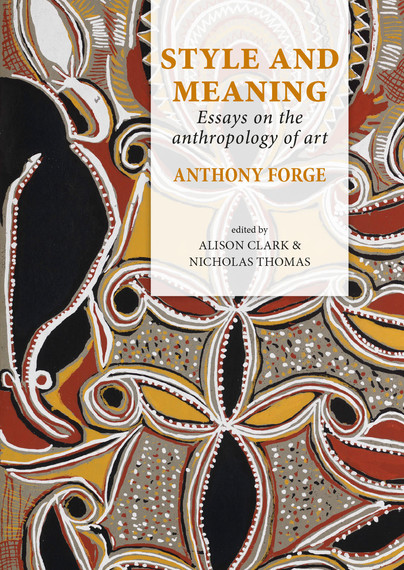
Pages: 300
ISBN: 9789088904479
Pub Date: 15 Sep 2017
Series: Pacific Presences
Illustrations: 70 fc / 16 bw
Pages: 300
ISBN: 9789088904462
Pub Date: 15 Sep 2017
Series: Pacific Presences
Illustrations: 70 fc / 16 bw
Description:
Anthropology's engagement with art has a complex and uneven history. While material culture, 'decorative art', and art styles were of major significance for founding figures such as Alfred Haddon and Franz Boas, art became marginal as the discipline turned towards social analysis in the 1920s. This book addresses a major moment of renewal in the anthropology of art in the 1960s and 1970s.
British anthropologist Anthony Forge (1929-1991), trained in Cambridge, undertook fieldwork among the Abelam of Papua New Guinea in the late 1950s and 1960s, and wrote influentially, especially about issues of style and meaning in art. His powerful, questioning-raising arguments addressed basic issues, asking why so much art was produced in some regions, and why was it so socially important? Fifty years later, art has renewed global significance, and anthropologists are again considering both its local expressions among Indigenous peoples and its new global circulation. In this context, Forge's arguments have renewed relevance: they help scholars and students understand the genealogies of current debates, and remind us of fundamental questions that remain unanswered. This volume brings together Forge's most important writings on the anthropology of art, published over a thirty year period, together with six assessments of his legacy, including extended reappraisals of Sepik ethnography, by distinguished anthropologists from Australia, Germany, Switzerland and the United Kingdom. Anthony Forge was born in London in 1929. A student at Downing College, Cambridge, he studied anthropology with Edmund Leach, and went on to undertake research with Raymond Firth at the London School of Economics. Over 1958-63 he undertook several periods of fieldwork among the Abelam of the Sepik region of Papua New Guinea, made major collections for the Museum der Kulturen, Basel, and went on to write a series of essays which were enormously influential for the anthropology of art and for studies of Melanesia. He was appointed Foundation Professor of Anthropology at the Australian National University in 1974 and taught there until his death in 1991.
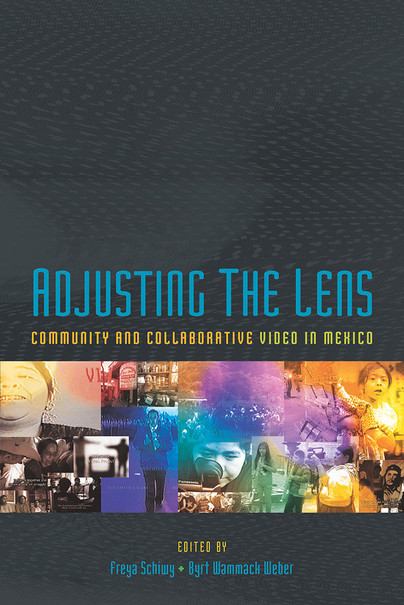
Format: Paperback
Pages: 264
ISBN: 9780822964469
Pub Date: 10 Jul 2017
Series: Illuminations
Description:
Adjusting the Lens offers a detailed analysis of contemporary, independent, indigenous-language audiovisual production in Mexico and in Mexican migrant communities in the United States. The contributors relate the styles and forms of collaborative and community media production to socially critical, transformative, resistant, and constitutive processes off-screen, thereby exploring the political within the context of the media. The chapters show how diasporic media makers map novel interpretations of image and sound into existing audiovisual discourses to communicate social and cultural changes within their communities that counter stereotypical representations in commercial television and cinema, and contribute to a newfound communal identity.
The new media expose the conflict of social movements and/or indigenous and rural communities with the state, challenge Eurocentrism and globalization, and reveal the power of audiovisual production to affect political change.
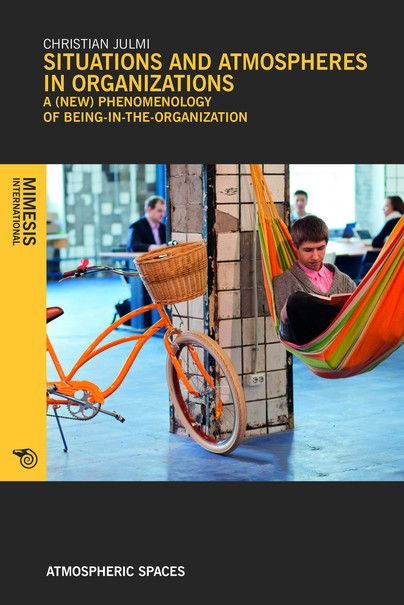
Format: Paperback
Pages: 154
ISBN: 9788869770814
Pub Date: 30 Jun 2017
Series: Atmospheric Spaces
Description:
Social life in organizations significantly relies on situations and atmospheres. Despite the high practical relevance, so far no attempts have been made to theoretically capture situations and atmospheres in organizations in a systematic manner. Aside from the difficulty of locating the situation or atmosphere within a dichotomy of subject and object, this seems mainly due to the complex interweaving of situations and atmospheres that is constitutive of organizations.
While, for instance, architecture explores the atmospheric setting within which situations take place, organizations are themselves a social entity and in this sense coincide with the situation shared by its members. Against this background, this book examines the social dynamics in the formation of situations and atmospheres. Theoretically, the book is primarily based on the phenomenological works of Hermann Schmitz and Guido Rappe.

Format: Hardback
Pages: 360
ISBN: 9780813169484
Pub Date: 02 Jun 2017
Series: Civil Rights and the Struggle for Black Equality in the Twentieth Century
Illustrations: 13 b/w photos, 26 tables, 1 figure
Description:
Once the capital of the Confederacy and the industrial hub of slave-based tobacco production, Richmond, Virginia has been largely overlooked in the context of twentieth century urban and political history. By the early 1960s, the city served as an important center for integrated politics, as African Americans fought for fair representation and mobilized voters in order to overcome discriminatory policies. Richmond's African Americans struggled to serve their growing communities in the face of unyielding discrimination.
Yet, due to their dedication to strengthening the Voting Rights Act of 1965, African American politicians held a city council majority by the late 1970s.In The Dream Is Lost, Julian Maxwell Hayter describes more than three decades of national and local racial politics in Richmond and illuminates the unintended consequences of civil rights legislation. He uses the city's experience to explain the political abuses that often accompany American electoral reforms and explores the arc of mid-twentieth-century urban history. In so doing, Hayter not only reexamines the civil rights movement's origins, but also seeks to explain the political, economic, and social implications of the freedom struggle following the major legislation of the 1960s.Hayter concludes his study in the 1980s and follows black voter mobilization to its rational conclusion -- black empowerment and governance. However, he also outlines how Richmond's black majority council struggled to the meet the challenges of economic forces beyond the realm of politics. The Dream Is Lost vividly illustrates the limits of political power, offering an important view of an underexplored aspect of the post--civil rights era.
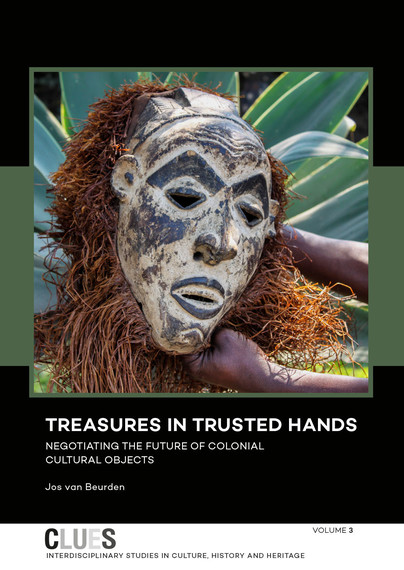

Pages: 230
ISBN: 9789088904400
Pub Date: 15 May 2017
Series: CLUES
Illustrations: 0
Pages: 230
ISBN: 9789088904394
Pub Date: 15 May 2017
Series: CLUES
Illustrations: 0
Description:
This pioneering study charts the one-way traffic of cultural and historical objects during five centuries of European colonialism. It presents abundant examples of disappeared colonial objects and systematises these into war booty, confiscations by missionaries and contestable acquisitions by private persons and other categories. Former colonies consider this as a historical injustice that has not been undone.
Former colonial powers have kept most of the objects in their custody. In the 1970s the Netherlands and Belgium returned objects to their former colonies Indonesia and DR Congo; but their number was considerably smaller than what had been asked for. Nigeria’s requests for the return of some Benin objects, confiscated by British soldiers in 1897, are rejected. As there is no consensus on how to deal with colonial objects, disputes about other categories of contestable objects are analysed. For Nazi-looted art-works the 1998 Washington Conference Principles have been widely accepted. Although non-binding, they promote fair and just solutions and help people to reclaim art works that they lost involuntarily. To promote solutions for colonial objects, nine Principles for Dealing with Colonial Cultural and Historical Objects are presented, based on the Washington Conference Principles. The nine are part of a model to facilitate mediation in disputes about them. This model can help to break the impasse in negotiations between former colonisers and colonies.Europe, the former colonisers, should do more pro-active provenance research into the acquisitions from the colonial era, both in public institutions and private collections. “This is a very commendable treatise which has painstakingly and with detachment explored the emotive issue of the return of cultural objects removed in colonial times to the metropolis. He has looked at the issues from every continent with clarity and perspicuity.”Prof. Folarin Shyllon (University of Ibadan) “Momumentaal werk van hoge kwaliteit. Het hoofdstuk over Congo is bijzonder goed gedocumenteerd en leerrijk”Dr. Guido Gryseels (Director-General of the Royal Museum for Central Africa in Tervuren) CLUES is an international scientific series covering research in the field of culture, history and heritage which have been written by, or were performed under the supervision of members of the research institute CLUE+.
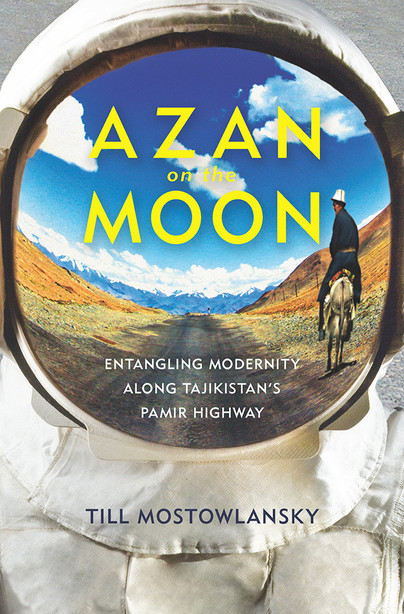
Format: Paperback
Pages: 224
ISBN: 9780822964438
Pub Date: 18 Apr 2017
Description:
Azan on the Moon is an in-depth anthropological study of people's lives along the Pamir Highway in eastern Tajikistan. Constructed in the 1930s in rugged high-altitude terrain, the road fundamentally altered the material and social fabric of this former Soviet outpost on the border with Afghanistan and China. The highway initially brought sentiments of disconnection and hardship, followed by Soviet modernization and development, and ultimately a sense of distinction from bordering countries and urban centers that continues to this day.
Based on extensive fieldwork and through an analysis of construction, mobility, technology, media, development, Islam, and the state, Till Mostowlansky shows how ideas of modernity are both challenged and reinforced in contemporary Tajikistan. In the wake of China's rise in Central Asia, people along the Pamir Highway strive to reconcile a modern future with a modern past. Weaving together the road, a population, and a region, Azan on the Moon presents a rich ethnography of global connections.

Format: Paperback
Pages: 136
ISBN: 9780813169521
Pub Date: 21 Mar 2017
Series: New Directions in Southern History
Illustrations: 4 b&w photos, 2 maps
Description:
On January 14, 1806, Sidney Hanson was raped by John Deskins on a rough gravel path in the woods in Tazewell County, Virginia. In the early nineteenth century, trials for rape were rare. Scanty court records typically lacked the detail needed to reconstruct the lives of those involved and evaluate the social and physical setting of the crime.
Yet the events on that fateful day in 1806 would be the exception.In A Rape in the Early Republic, Randal L. Hall reproduces the complete trial testimony of Alexander Smyth, the prosecutor for Hanson's trial. Smyth's detailed record offers a revealing glimpse into how early rape cases moved through the legal system, first at the local level and then in the state's recently created district court system. It also shows that Deskins was not the only one on trial -- Hanson's character was being scrutinized as well.Hall's introduction, rather than offering an analysis of Smyth's documents, provides important context and highlights historical themes that Hanson's situation illustrates. Featuring classroom discussion ideas and a list of suggested reading, A Rape in the Early Republic will be a valuable resource for students and scholars as well as anyone interested in gender, law, and society in the early republic.

Format: Paperback
Pages: 156
ISBN: 9781785705496
Pub Date: 15 Dec 2016
Description:
Traditionally the study of early medieval burial practices in England has focused on the furnished burials of the early Anglo-Saxon period with those of the later centuries perceived as uniform and therefore uninteresting. The last decade has seen the publication of many important cemeteries and synthetic works demonstrating that such a simplistic view of later Anglo-Saxon burial is no longer tenable. The reality is rather more complex, with social and political perspectives influencing both the location and mode of burial in this period.
This edited volume is the first that brings together papers by leading researchers in the field and illustrates the diversity of approaches being used to study the burials of this period. The overarching theme of the book is differential treatment in death, which is examined at the site-specific, settlement, regional and national level. More specifically, the symbolism of conversion-period grave good deposition, the impact of the church, and aspects of identity, burial diversity and biocultural approaches to cemetery analysis are discussed.
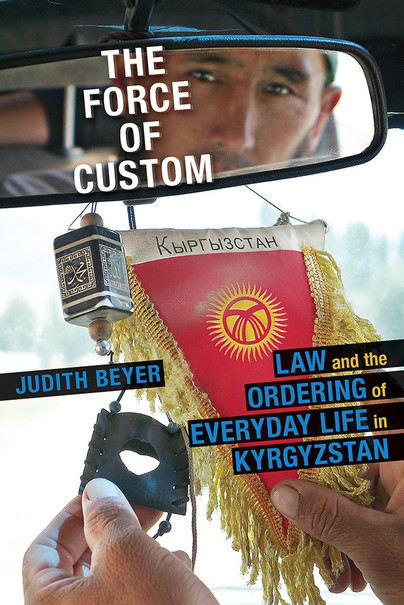
Format: Paperback
Pages: 248
ISBN: 9780822964209
Pub Date: 07 Dec 2016
Description:
The Force of Custom presents a finely textured ethnographic study that sheds new light on the legal and moral ordering of everyday life in northwestern Kyrgyzstan. Through her extensive fieldwork and firsthand experience, Judith Beyer reveals how Kyrgyz in Talas province negotiate proper behavior and regulate disputes by invoking custom, known to the locals as salt. While salt is presented as age-old tradition, its invocation is shown to be a highly developed and flexible rhetorical strategy that people adapt in order to meet the challenges of contemporary political, legal, economic, and religious environments.
Officially, codified state law should take precedence when it comes to dispute resolution, yet the unwritten laws of salt and the increasing importance of Islamic law provide the standards for ordering everyday life. As Beyer further demonstrates, interpretations of both Islamic and state law are also intrinsically linked to salt. By interweaving case studies on kinship, legal negotiations, festive events, mourning rituals, and political and business dealings, Beyer shows how salt is the binding element in rural Kyrgyz social life and how it is used to explain and negotiate moral behavior and to postulate communal identity. In this way, salt provides a time-tested, sustainable source of authentication that defies changes in government and the shifting tides of religious movements.


Pages: 300
ISBN: 9789088903915
Pub Date: 15 Nov 2016
Illustrations: >100bw/>100fc
Pages: 300
ISBN: 9789088903908
Pub Date: 15 Nov 2016
Illustrations: >100bw/>100fc
Description:
A lamak is a long narrow ritual hanging that is an essential requirement at almost all rituals in Bali. It is hung from altars and shrines at temple festivals and on festive holy days. Made usually of palm leaves, it is by nature ephemeral and it is made time and again.
Even though permanent forms of the lamak, made of cloth or coins, do exist, the ephemeral palm leaf form must be present. Sometimes reaching a length of several metres and decorated with a range of motifs, its most elaborate forms are made by specialist craftsmen and women. The lamak serves as base for offerings and attracts deities and deified ancestors to them. Decorative motifs representing sources of life are ordered according to Balinese concepts of the vertical structure of the cosmos. Best known among the motifs is the cili, a human figure in female form that symbolizes human fertility and regeneration. Through offerings and the active role of the lamak, worshippers offer thanks to their deities and request prosperity and protection. Despite decades of change and modernization that have affected all aspects of life in Bali, the essential role of the lamak has survived intact. Although there are many studies of Bali’s internationally appreciated arts and crafts, this is the first one to examine in detail this fascinating and unique form of ephemeral material culture which is a prominent feature of Balinese creativity. The study answers the question: why do Balinese make lamak and why do they continue to make them time and again? It examines the use and function of the lamak in ritual, the motifs that decorate them, the materials and techniques to make them, regional and individual styles, and processes of change and commercialization. Francine Brinkgreve is curator for the Insular Southeast Asia collection at the National Museum of World Cultures, which includes Museum Volkenkunde in Leiden and the Tropenmuseum in Amsterdam. During her study Cultural Anthropology at Leiden University, she specialized in the cultures of Indonesia.

Format: Paperback
Pages: 192
ISBN: 9789080774445
Pub Date: 01 Nov 2016
Imprint: Blikvelduitgevers Publishers
Illustrations: full colour images
Description:
Egypt’s Wearable Heritage combines different subjects of crafts and arts from Egypt and the West-Asian and North African region. It is a richly illustrated and colourful book on different aspects of ‘wearable heritage’, such as jewellery, costume, amulets, but also hairstyles and even weaponry. Egypt’s Wearable Heritage contains aspects of beliefs, economy and socio-cultural phenomena and contemporary culture.



















